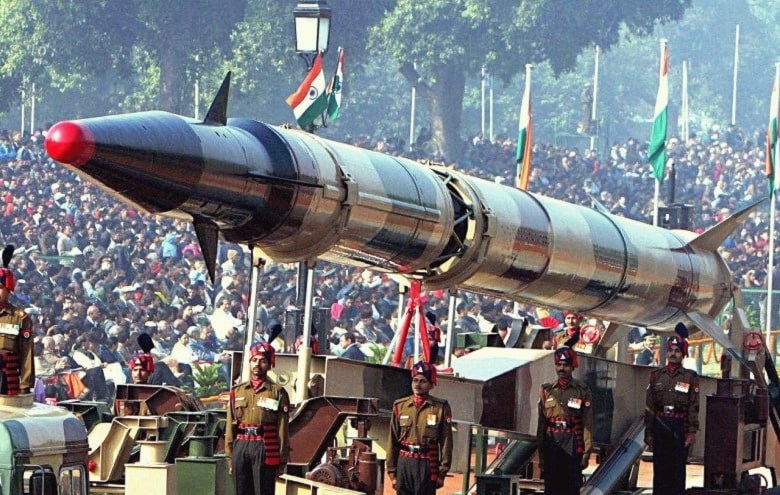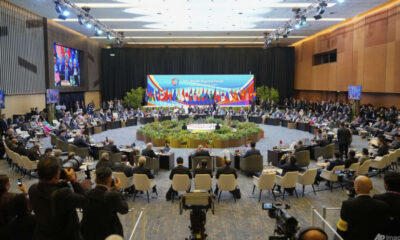Politics
Indian Air Force Strikes Raise Nuclear Tensions Before Elections

In March 2025, just months before India’s Lok Sabha elections, the Indian Air Force executed a precision airstrike on what it termed “terror infrastructure” in Pakistan-administered Kashmir. This operation, named Operation Sindoor, drew comparisons to the 2019 Balakot airstrike, which had similarly bolstered the approval ratings of Prime Minister Narendra Modi and the ruling Bharatiya Janata Party (BJP). While India celebrated the military success, the region faced heightened tensions, as Pakistan scrambled jets, mobilized forces along the Line of Control (LoC), and warned of “unpredictable retaliation.”
The response from Pakistan highlighted the precariousness of the situation. Although a large-scale conflict involving nuclear weapons was averted, the operation set a concerning precedent: military actions could be weaponized as electoral strategies. With India entering a new election cycle, Modi’s political maneuvering may lead to further escalations, especially amid economic difficulties, rising unemployment, and increasing voter discontent with the BJP.
Escalating Missile Development
Since 2019, both India and Pakistan have intensified their missile development programs. India now possesses a range of nuclear-capable ballistic missiles, including the short-range Prithvi and the long-range Agni-V, which can strike targets over 5,000 kilometers away. The introduction of Multiple Independently Targetable Reentry Vehicles (MIRVs) enables Indian missiles to carry multiple nuclear warheads aimed at different targets, significantly reducing response time for adversaries.
Conversely, Pakistan has adopted a different approach, focusing on tactical nuclear weapons. Its Nasr missile, designed for short-range battlefield scenarios, aims to counter India’s conventional military advantages, reflecting its doctrine of “full-spectrum deterrence.” This strategy underscores the risks involved: future confrontations may not remain confined to conventional warfare.
The modernization of delivery systems has further complicated the security landscape. Both nations now possess sea-based nuclear platforms, such as submarines capable of launching ballistic missiles, enhancing their second-strike capabilities. Advanced surveillance technologies, including satellites and drones, increase the likelihood of misinterpretations during military movements, heightening the risk of catastrophic miscalculations should hostilities arise.
Nationalism and Nuclear Rhetoric
Modi’s electoral strategy is anchored in majoritarian nationalism, which includes demonizing Muslims, tightening control over Kashmir, and portraying Pakistan as an enduring adversary. This approach is not merely a political tactic but a calculated effort to galvanize support among the BJP’s core Hindu nationalist base. Yet, in today’s nuclear reality, such rhetoric is profoundly perilous.
During Operation Sindoor, senior BJP officials made casual references to India’s nuclear capabilities, with Modi himself joking about nuclear weapons being reserved for celebratory occasions. Such statements trivialize the grave nature of nuclear deterrence, transforming it into populist rhetoric at campaign events.
In response, Pakistan’s military, despite facing internal political challenges, has firmly stated that any further Indian military action, even if limited, would be met with a “massive and disproportionate” response. The changing dynamics have made Pakistan’s red lines more ambiguous and its tolerance thinner, suggesting that the potential for miscalculation leading to nuclear conflict is increasingly real.
International Implications and Democratic Responsibility
The global response to Modi’s militaristic posturing has been largely muted, raising concerns about complicity. Countries like the United States, Europe, and Japan have engaged with India, viewing it as a counterbalance to China, often overlooking issues related to democratic backsliding and aggressive foreign policy. This strategic oversight could have dire consequences, particularly as India approaches its election season.
A conflict in South Asia would not remain confined to the region. The Arabian Sea, crucial for global oil trade, would be directly affected, and China, with significant investments in Pakistan through the China-Pakistan Economic Corridor (CPEC), would be forced to respond. Estimates suggest that even a limited nuclear exchange involving just 100 warheads—less than half of the combined arsenals of India and Pakistan—could result in over 20 million immediate deaths and trigger a nuclear winter that disrupts global agriculture for years.
This situation calls for a heightened sense of responsibility among Indian voters, the media, and civil society. The electorate must scrutinize why their youth are being sent to the brink of war for electoral gains. Journalists should challenge the state’s aggressive narratives rather than amplify them, and institutions must resist becoming instruments of war propaganda.
As Modi faces the temptation to leverage conflict in the lead-up to elections, the choice between peace and populism will be critical. In a nuclear-armed South Asia, the ramifications of misadventure are profound, and the stakes have never been higher. The future of the region depends not on military might but on the collective courage to prioritize peace over nationalist fervor.
-

 Business5 months ago
Business5 months agoKenvue Dismisses CEO Thibaut Mongon as Strategic Review Advances
-

 Lifestyle4 months ago
Lifestyle4 months agoHumanism Camp Engages 250 Youths in Summer Fest 2025
-

 Sports4 months ago
Sports4 months agoDe Minaur Triumphs at Washington Open After Thrilling Comeback
-

 Sports5 months ago
Sports5 months agoTupou and Daugunu Join First Nations Squad for Lions Clash
-

 Top Stories5 months ago
Top Stories5 months agoColombian Senator Miguel Uribe Shows Signs of Recovery After Attack
-

 World5 months ago
World5 months agoASEAN Gears Up for Historic Joint Meeting of Foreign and Economic Ministers
-

 Health4 months ago
Health4 months agoNew Study Challenges Assumptions About Aging and Inflammation
-

 Business5 months ago
Business5 months agoOil Prices Surge Following New EU Sanctions on Russia
-

 Entertainment4 months ago
Entertainment4 months agoDetaşe-Sabah Violin Ensemble Captivates at Gabala Music Festival
-

 Entertainment4 months ago
Entertainment4 months agoBaku Metro Extends Hours for Justin Timberlake Concert
-

 Top Stories5 months ago
Top Stories5 months agoRethinking Singapore’s F&B Regulations Amid Business Closures
-

 Business5 months ago
Business5 months agoU.S. House Approves Stablecoin Bill, Sends to Trump for Signature









